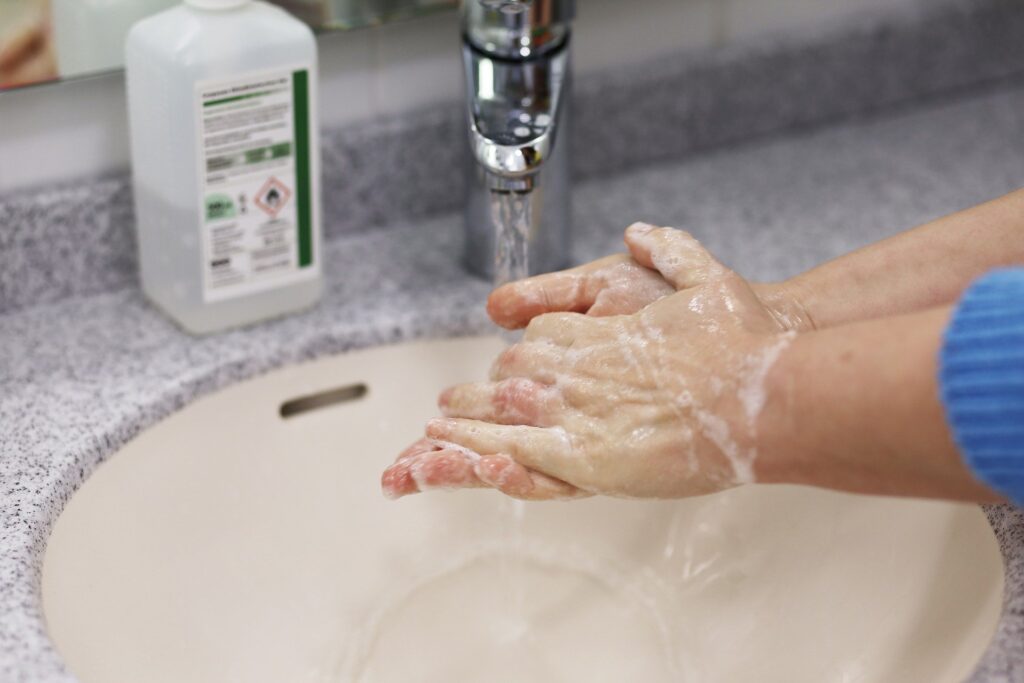Amidst the information being released concerning COVID-19, also known as the coronavirus, is a gem that will serve you well far into the future: proper handwashing procedures. Study after study has shown that properly washing your hands is one of the best defenses against any virus, bacteria, or germ. If you want to prevent being sick with a cold, stomach virus, or COVID-19, then handwashing is one of your best lines of defense. Take our quiz on the correct way to wash your hands and to learn the science behind handwashing.
1.) Handwashing can prevent approximately what percentage of respiratory illnesses, such as the cold, flu, and COVID-19, by removing the germs from your hands?
- Prevents about 5% of respiratory illnesses.
- Prevents about 10% of respiratory illnesses.
- Prevents about 20% of respiratory illnesses.
- Prevents about 30% of respiratory illnesses.
2.) Handwashing can prevent approximately what percentage of gastrointestinal illnesses, such as diarrhea, by removing the germs from your hands?
- Prevents about 20% of gastrointestinal illnesses.
- Prevents about 30% of gastrointestinal illnesses.
- Prevents about 40% of gastrointestinal illnesses.
- Prevents about 50% of gastrointestinal illnesses.
3.) When should you wash your hands?
- Before, during, and after preparing food, and before eating.
- Before and after caring for someone at home who is sick with vomiting or diarrhea.
- After blowing your nose, coughing, or sneezing.
- After using the toilet or changing a diaper.
- All of the above.
4.) What is the estimated global rate of handwashing after using the toilet?
- 19%
- 27%
- 42%
- 59%
5.) True or False? Washing your hands with water and soap is much more effective than just washing with water.
6.) What is the correct order to wash your hands?
- Wet, lather, rinse
- Wet, lather, scrub, rinse, dry
- Wet, dry
- Wet, rinse, dry
7.) When lathering and scrubbing your hands with soap, what parts of the hand should you make sure to get, in addition to your palms?
- The backs of your hands
- Between your fingers
- Under your nails
- All of the above
8.) How long should you spend lathering and scrubbing your hands with soap?
- 5 seconds
- 10 seconds
- 15 seconds
- 20 seconds
9.) True or False? Hand sanitizer is a better option than washing your hands with soap.
10.) If you have no soap or clean, running water to wash your hands, and you have to use hand sanitizer, what is the lowest amount of alcohol it should contain?
- 40% alcohol
- 50% alcohol
- 60 % alcohol
- 70% alcohol
Compiled by ERIKA ALDRICH / Information provided by the Centers for Disease Control and Prevention (CDC)
ANSWERS:
- C. Prevents about 20% of respiratory illnesses. Handwashing can prevent approximately 20% of respiratory illnesses.
- B. Prevents about 30% of gastrointestinal illnesses. Handwashing can prevent approximately 30% of gastrointestinal illnesses.
- E. All of the above. You should also wash your hands after touching or handling animals, animal food and bowls, and garbage.
- A. 19%. The CDC estimates that approximately 19% of people worldwide wash their hands after using the toilet.
- True. Studies have found that the use of soap with clean, running water significantly reduces the number of germs on the hands.
- B. Wet, lather, scrub, rinse, dry. To often, people skip over adequately scrubbing and drying their hands, which can leave more germs behind.
- D. All of the above. It is important to lather and scrub all parts of your hands to properly remove germs.
- D. 20 seconds. A good rule of thumb is to sing the Happy Birthday song twice in a row while washing your hands to ensure you spend at least 20 seconds doing so.
- False. Hand sanitizer has been shown in studies to be less effective at removing germs than handwashing with soap and clean, running water.
- C. 60% alcohol. Use hand sanitizer that has a label that says it contains at least 60% alcohol.
